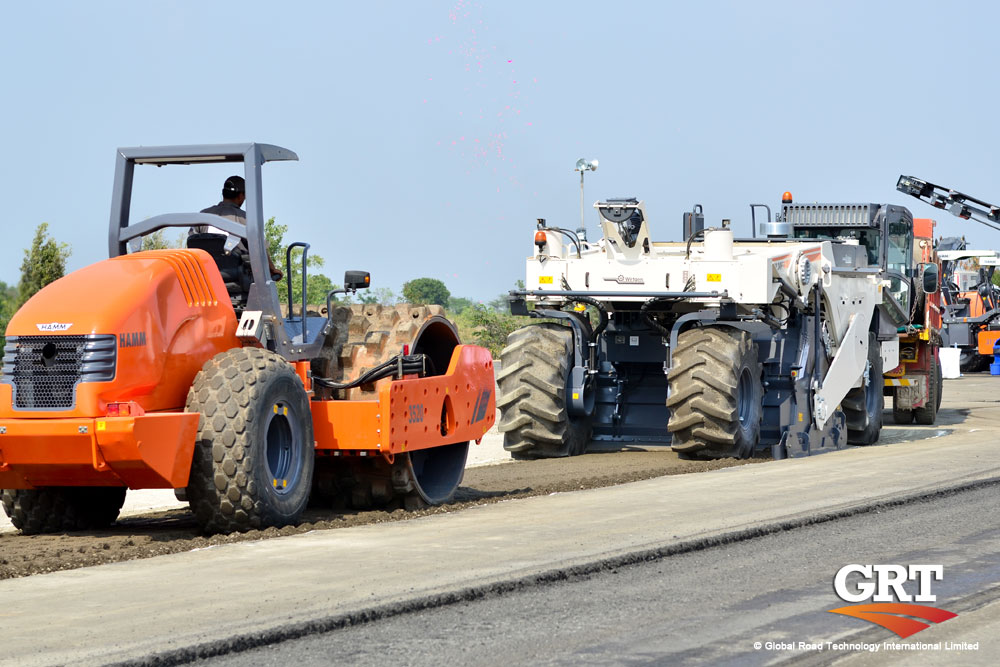
Soil Stabilisation Series – Article 1
Roads and Pavements
All roads and pavement are compromised over time by the consistent compression from traffic. In addition, the exposure to weather leads to the onset of erosion, potholes, dust, rutting, corrugation and they all lead to the same conclusion, total pavement failure. It is due to this reason it is fundamental to maximise the efficiency and lifespan of the road pavement to save cost, material and time. The aim of this article is intended to review what have been the more traditional stabilisation agents used in road pavement construction – whether in the improvement of natural, subgrade materials or in pavement layers.
Soil Stabilisation?
Soil can be manipulated in numerous ways to achieve a certain purpose in the industry today. The engineering industry has been able to adjust certain properties of soil to their advantage using chemicals or a mixture of various soils. By adding certain chemicals/constituents, they are able to increase: a soils weight bearing capabilities, tensile strength and performance of in-situ subsoils/sands and waste material for a practical purpose such as road pavement. For the purpose of this article, soil engineering for the purpose of road design and construction will be discussed. game.
There are two main classifications of soil stabilisation in the context of road base material. First is mechanical and the second is chemical. Chemical stabilisation is the addition of chemically active materials, whilst mechanical stabilisation is the grading of soil that is changed by mixing it with other types of soil of different grades which results in a compacted soil mass. There are a number of factors that must be taken into account when utilising soil stabilisation techniques, including seismicity, soil conditions, climate and dosage of each chemical added to the soil.
The chemical/soil that is added is dependent on the property of the soil that is to be enhanced or altered for practical application. In future articles a review of newer and even controversial techniques will be undertaken, where in some cases, enzymes and surfactants are preferred, in other cases, more non-traditional stabilizers are used, such as biopolymers, synthetic polymers, co-polymer products, and cross-linking styrene-acrylic polymers. However, in specific situations, it may even be appropriate to mix the soil with lignosulfonates (timber resins), ionic stabilisers, fibre reinforcement, calcium chloride, calcite, sodium chloride or magnesium chloride to reach the desired property calibration.
Lime and Cement Stabilisation (LCS)
LCS is primarily utilised to improve the properties of site materials. The main uses for LCS are for structural foundations of roads, dams, and building sites. Lime stabilisation of clay material, in particular, is aimed at reducing shrink/swell properties, whilst reinforcing hardness of material up to 10x the materials normal amount. Following lime, cement can be utilised as a binder to further strengthen and increase the durability of the surface/foundation depending on its application. Cement is of particular benefit to improve the performance of the lower pavement layers. Various projects also utilise blends of alternative components such a slag or flyash. The more wider used material blend is the lime and cement composite. The LCS technology has a range of additional properties which assist in solving real-world construction issues. For example, the LCS technology can be used to treat construction sites that are located in high rainfall prone areas, which allow work to continue throughout wet seasons. The plasticity of cohesive materials can also be lowered when mixed with LCS.
There are various lime types which are chemically manipulated for their specific use. Agricultural lime is otherwise known as calcium carbonate and is not suitable for pavement construction. Hydrated lime (calcium hydroxide) is often used for lime saturation in laboratory testing, but again is mistaken for pavement construction, when it is not an effective method of stabilisation. However, the lime type that is most commonly used for pavement construction is quicklime, otherwise known as Calcium Oxide.
The conditions to which LCS can be used are heavily dependent on the area that it will be applied to, some factors that are considered are construction conditions and loading, geometric site layout, a specific requirement of typical density, material type, subgrade and existing pavement material.
Foam Bitumen Stabilisation (FBS)
FBS is the in-situ or plant mix stabiliser of pavement materials with bitumen as the primary binder. This stabilisation process is utilised to enhance the strength of granular materials whilst retaining a flexible pavement. Overall, FBS when mixed with the material makes up 3-4% of the material by mass. Lime is mixed as a secondary binder to provide additional strength, and assist in the dispersion of bitumen throughout the mixture. However, there is no one mix wonder, that can be applied in most cases. Each blend is dependent on the project. Each pavement must be designed specifically to match the pavement modulus that is used in the pavements structural design.
The most common situations at which FBS technology is used is when there is:
Cost, design, utility depth, vibration, moisture, plasticity and existing bound pavement are all primary factors that must be taken into account when considering FBS. Each of these factors plays a specific role or can affect FBS.
Upcoming Articles:
The following articles are a part of the “Soil Stabilisation” series of articles by GRT, which will assist you in understanding the following areas: what soil stabilisation is, why it is an important tool within the industry, the common misconceptions of soil stabilisers, as well as the do’s and don’ts when it comes to purchasing products for you soil stabilisation needs. It will also include a full breakdown, on the mechanics of the soil stabilisation technology specifically designed for civil, mining and the construction industry.
Your feedback is important to us. If you enjoyed reading this Global Road Technology industry update and found it informative, please let us know by leaving a REVIEW.
Are environmental regulations, health and safety concerns or potential profit loss a concern right now?
Contact Us Now